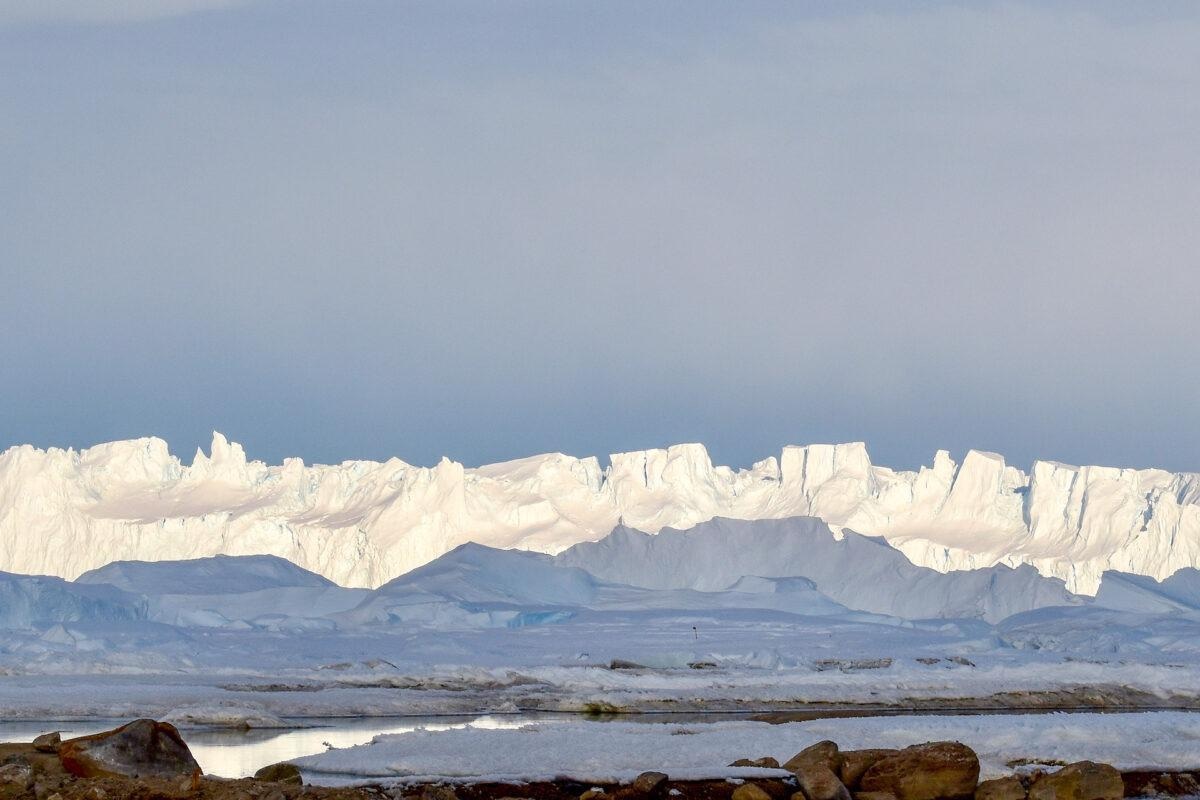Reviewed by Alex SmithMay 10 2022
An investigation carried out on the underside of the world’s largest ice sheet in East Antarctica has revealed a city-size lake whose sediments may hold a history of the ice sheet from its earliest beginnings.
 The coast of Antarctica near where the East Antarctic Ice Sheet meets the sea. Image Credit: Shuai Yan/UT Jackson School of Geosciences.
The coast of Antarctica near where the East Antarctic Ice Sheet meets the sea. Image Credit: Shuai Yan/UT Jackson School of Geosciences.
That phenomenon would answer questions regarding what Antarctica was like before it froze, how climate change has impacted it over its history, and how the ice sheet may behave as the world gets warmer.
Disclosed by heavily instrumented polar research aircraft, Lake Snow Eagle is covered by 2 miles of ice and lies in a mile-deep canyon in the highlands of Antarctica’s Princess Elizabeth Land, situated a few hundred miles from the coast.
This lake is likely to have a record of the entire history of the East Antarctic Ice Sheet, its initiation over 34 million years ago, as well as its growth and evolution across glacial cycles since then. Our observations also suggest that the ice sheet changed significantly about 10,000 years ago, although we have no idea why.
Don Blankenship, Study Author and Senior Research Scientist, Institute for Geophysics, The University of Texas at Austin
Since it lies comparatively close to the coast, scientists think that Lake Snow Eagle might contain data regarding how the East Antarctic Ice Sheet initially formed and the part played by the Antarctic Circumpolar Current - a ring of cold water surrounding the continent that researchers think is accountable for keeping it cool.
The study was published on May 9th, 2022, in the journal Geology.
The first hint that the lake and its host canyon existed appeared when researchers spotted a smooth depression on satellite images of the ice sheet. To verify its presence, scientists spent three years flying systematic surveys over the site with ice-penetrating radar and sensors that quantify minute changes in Earth’s magnetic field and gravity.
I literally jumped when I first saw that bright radar reflection.
Shuai Yan, Study Lead Author and Graduate Student, Jackson School of Geosciences, The University of Texas at Austin
Yan was working as a flight planner for the field research that investigated the lake.
What Yan observed was the lake’s water that, dissimilar to ice, reflects radar like a mirror. Along with the magnetic and gravity surveys, which lit up the basic geology of the region and the depth of water and sediments, Yan made an elaborate picture of a jagged and highland topography along with Lake Snow Eagle nestled at the base of a canyon.
The newly found lake measures around a depth of 650 ft, a length of 30 miles, and a width of 9 miles. The sediments present at the bottom of the lake are around 1,000 ft deep and might consist of river sediments older than the ice sheet itself.
In the days to come, the scientists stated that getting a sample of the lake’s sediments by drilling into it would fill big gaps in researchers’ knowledge of Antarctica’s glaciation and offer crucial data regarding the ice sheet’s possible demise from climate change.
This lake’s been accumulating sediment over a very long time, potentially taking us through the period when Antarctica had no ice at all, to when it went into deep freeze. We don’t have a single record of all those events in one place, but the sediments at the bottom of this lake could be ideal.
Martin Siegert, Study Co-Author and Glaciologist, Imperial College London
The name “Lake Snow Eagle” was given after one of the aircraft utilized in its breakthrough. It is one of the several features that are uncovered by ICECAP-2, an international collaboration to chart the last unfamiliar regions of East Antarctica by polar research teams from the United Kingdom, United States, China, Brazil, Australia and India.
The researchers who were part of the study were from UTIG, Scripps Institute for Oceanography, Imperial College London, the Australian Antarctic Division, and the Polar Research Institute of China. The study was financially supported by the G. Unger Vetlesen Foundation and funded by governments and institutions of the countries that were a part of it.
Journal Reference:
Yan, S., et al. (2022) A newly discovered subglacial lake in East Antarctica likely hosts a valuable sedimentary record of ice and climate change. Geology. doi.org/10.1130/G50009.1.